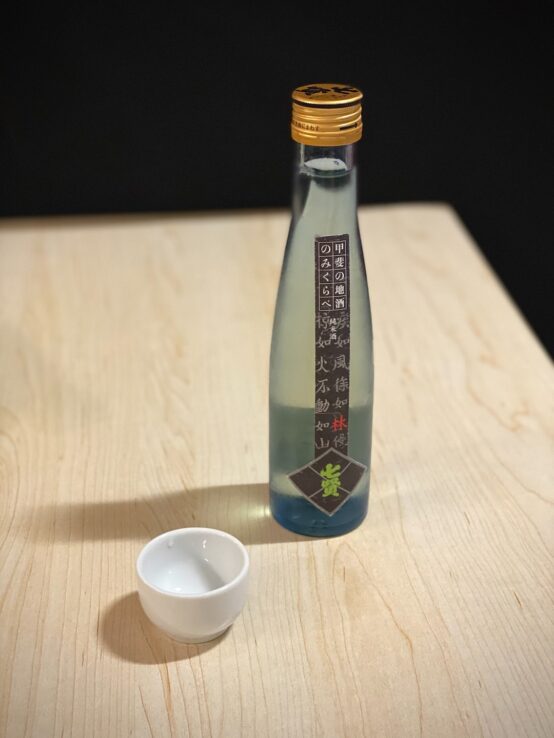The Cultural Significance of Sake: Celebrating Tradition and Heritage
During a visit to a Japanese bar in Tokyo, your first instinct is to order sake. Unfortunately, asking the bartender for “sake” in Japanese would only get you a blank look. This is because the word sake, in Japanese, just means alcohol.
Instead, during your sake tasting, you should ask for “nihonshu,” or “Japan’s alcohol.” The history of sake has intrinsic ties to the heart of Japanese culture. It goes back almost as far as recorded Nippon history.
Your sake education will give you a deep dive into the heritage of this national drink. In the meantime, we are here to provide a summary.
Read on as we discover together the tradition of sake, the most important drink in Japan.
History of Sake
Rice is a staple in the modern world and has been for at least 10,000 years in Asia. The earliest evidence points to rice cultivation in India at approximately 4,530 BCE. A couple of thousand years later, written records in China make mention of it.
Needless to say, rice has played a pivotal role across Asia. In Japan, an expansive fertile archipelago, it became the agricultural foundation. Around 400 BC, we first see it appear on the historical record.
Across the world, many countries refined their own respective ethanol-production industries. In Greece and Georgia, grape viticulture. In Russia and Poland, vodka.
Rice makes for an excellent carbohydrate to convert into ethanol, too. Koreans developed soju, while the Japanese created sake.
Importance of Sake in Japanese Culture
Understand that sake heritage is about more than just an alcoholic beverage. To the Japanese, it’s quite literally a vehicle and tool for communion with the gods.
Although modern Japan is mainly atheistic, its ancestral religion is Shintoism–an offshoot of Buddhism. Sake played a part in religious rites and benedictions.
In early times, the Japanese presented it as an offering at shrines. They drank it in sacred ceremonies, hoping to invoke favor from on high. In fact, the average person did not drink sake just to get drunk–at least not in the early years.
These days, sake is widespread both in Japan and internationally. That cultural significance has not evaporated. The Japanese continue to use it in rites of passage, celebrations of milestones, and ceremonies.
Properties of Sake
Although we refer to sake as “rice wine,” it’s not exactly a wine. It uses fermentation, such as in wine, but also incorporates brewing. It has some properties of liquor, too, despite not using a distillation process in most cases.
It’s clear, like soju, often with a yellowish tint. It has an alcohol ratio of approximately 15-16%, much akin to wine.
There are several different types of sake. The primary difference between them is the rice-polish ratio. This refers to how much of the outer layer has been polished away from the rice.
Here are a few common categories of sake:
- Junmai: the sake adheres to no rice polish ratio, leading to a variety of flavors
- Daiginjo: adheres to a ratio of at least 50%, tending towards a fruity, light flavor
- Ginjo: at least 60%, and is also fruity-tasting
- Honjozo: at least 70%, containing a quite earthy flavor
Benefits to Health
If there’s one thing Japan is known for, it’s its high standards of health. Sake heritage is likewise one of well-being. Just as wine, there are some health benefits to drinking sake.
- Probiotics: these are gut bacteria that aid in digestion
- Reduction in chronic diseases: some evidence suggests sake can reduce the incidence of cancer, heart disease, and more
- Polysaccharides and amino acids: these compounds promote healthy skin
- Allergy management: sake may inhibit enzymes that provoke allergic reactions
Traditional Sake Tasting
To this day, Japanese people participate in sake-focused ceremonies. Your sake education will go into great depth about the various traditional ceremonies below:
- Kagami biraki: participants break open a cask of sake–sometimes sparkling sake–during important life events
- San san kudo: bride and groom stack and drink from porcelain “sakazuki” cups to symbolize the past and future
- Omiki: a ceremony to offer sake to the gods
- Seasonal changes: changes of season, especially relating to harvest, necessitate a sake tasting
Ways That You Can Do a Sake Tasting
During your sake education, we will also try sake in many different ways. Here are some authentic Japanese methods for tasting and enjoying sake:
- Sip from a “choko“: these are small porcelain shot glasses, and you sip sake like tea
- Drink from a “Tokkuri”: your sake master pours warm sake from this specialized ceramic decanter
- Try chilled sake: sake cooled in an ice bucket or with a single ice cube–perfect for summer consumption
- Try sparkling sake: like sparkling wine, it’s more refreshing
- Try plum and yuzu sake: fruit-flavored sake drinks applied to desserts and cocktails
- Try nigori sake: contains rice solids that add texture and additional sweetness
Ideally, you should drink sake in the midst of friends. It’s a tool for bonding, just like any other alcohol.
Sake Shrines and Breweries
Whether you want sparkling sake or high-polish premium designations, it all begins with breweries and shrines. Breweries make the sake, and shrines bless it. This creates a cyclical, symbiotic relationship.
To this day, many breweries continue to support Japan’s sake shrines. You can see evidence of this in the painted casks that they use to decorate the place. Or, the bundle of cedar leaves formed into a ball shape that hangs from the brewery’s ceiling.
There is a long sake heritage between the shrines in the breweries. All of this ties into Japanese mythology.
The Japanese believe that the gods gave them rice. To avoid wasting spoiled or moldy rice, the gods then taught them how to make sake. After you’ve taken your sake education, plan a trip to Japan to see where it all began.
Begin Your Sake Education with the Sake School of America
A simple sake tasting is not enough to comprehend the vast ethnic significance behind this unassuming rice drink. The tradition of sake goes straight to the heart of Japanese Shintoism and culture. Next time you enjoy sparkling sake, know that it’s the culmination of over 1,000 years of tradition.
Ready to begin your sake education at Sake School of America? Check out our course calendar here and consider signing up.


